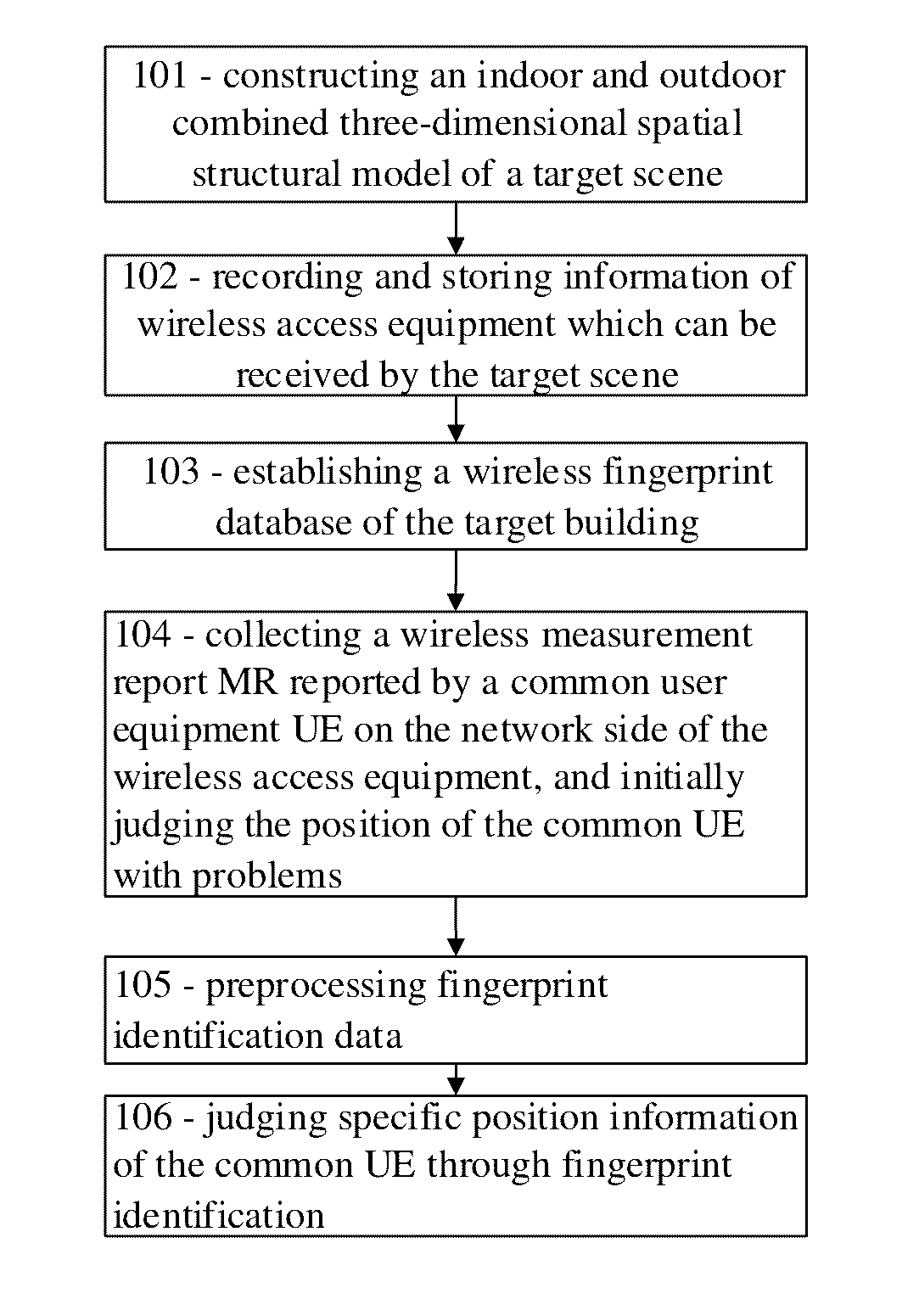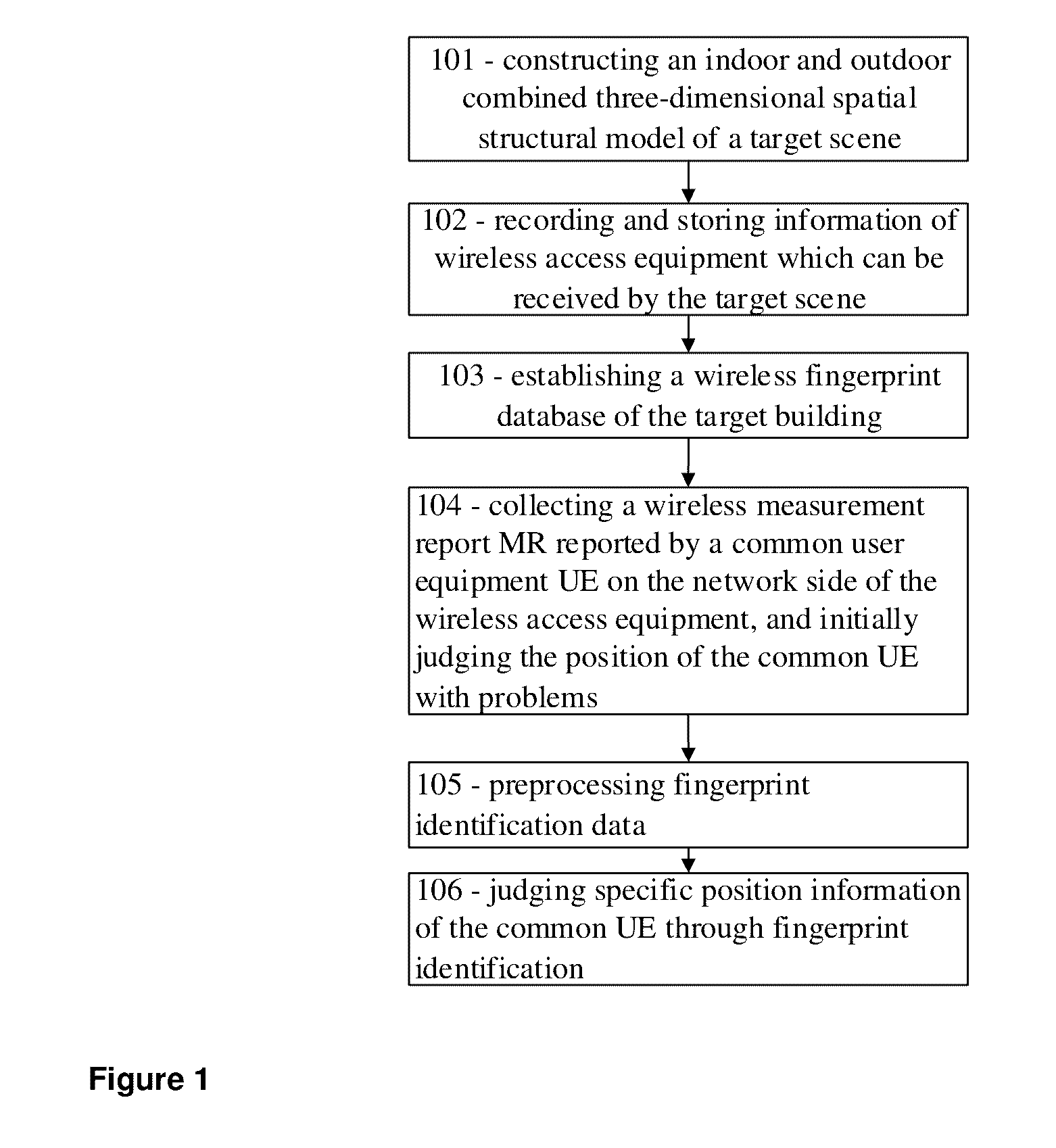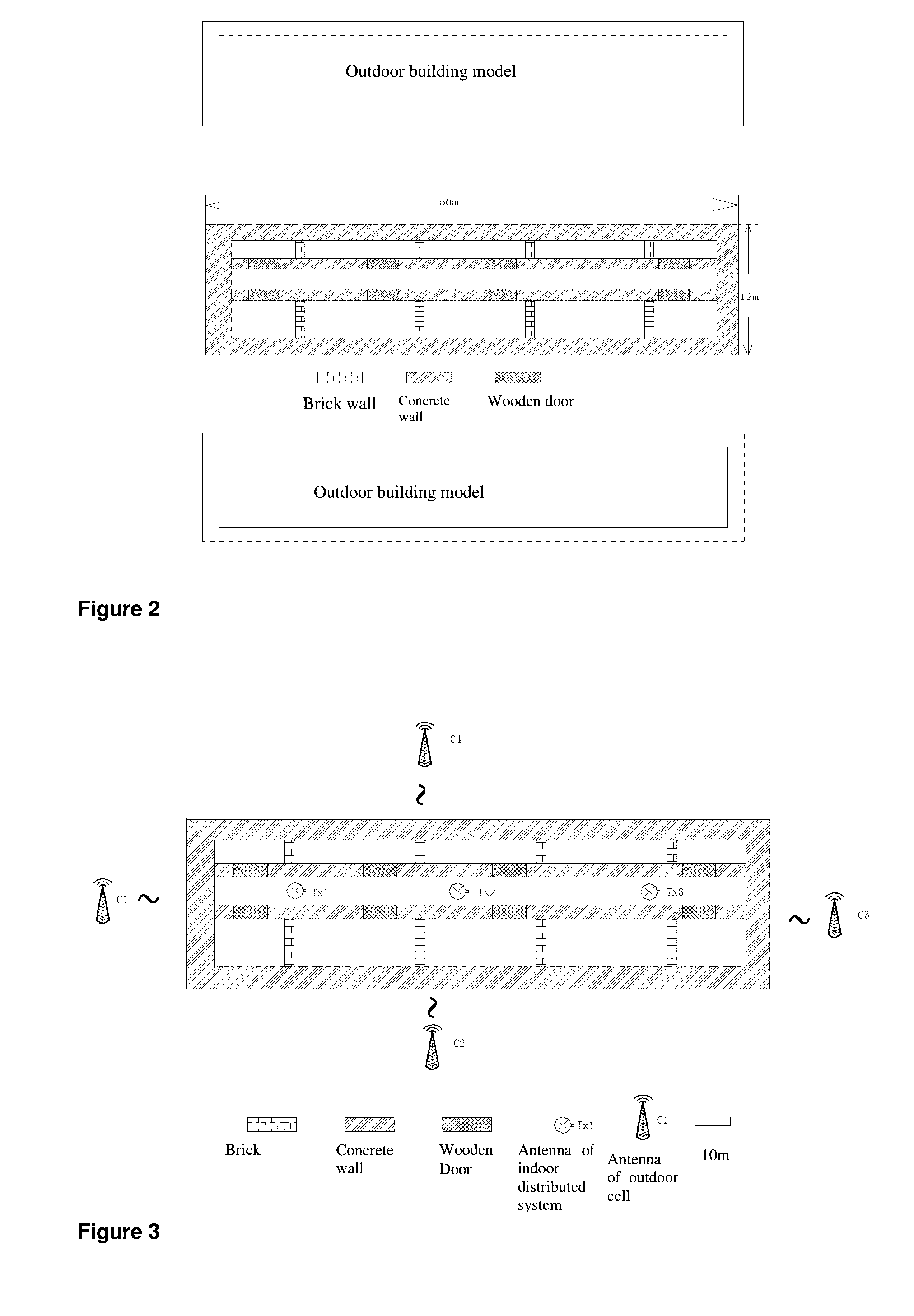Method of positioning problem regions covered with indoor wireless network
- Summary
- Abstract
- Description
- Claims
- Application Information
AI Technical Summary
Benefits of technology
Problems solved by technology
Method used
Image
Examples
Embodiment Construction
[0085]Hereinafter the invention is further described with reference to accompanying figures and embodiments.
[0086]A method for method of positioning problem regions covered with an indoor wireless network according to the present invention is used for positioning blind coverage areas and problem devices of an indoor distributed system network within a target building. The five-floored target building has the same structure at each floor. A WCDMA network is established in the building. The WCDMA network covers the building through an indoor distributed system. The WCDMA network outside the target building is covered by outdoor macro base stations. The indoor distributed system and the outdoor macro base stations belong to different cells.
[0087]It needs to be noted that the present invention is not limited to WCDMA networks, and can also be applied to a combination of other wireless wide area networks.
[0088]As shown in FIG. 1, a method of positioning problem regions covered with an in...
PUM
 Login to View More
Login to View More Abstract
Description
Claims
Application Information
 Login to View More
Login to View More - R&D
- Intellectual Property
- Life Sciences
- Materials
- Tech Scout
- Unparalleled Data Quality
- Higher Quality Content
- 60% Fewer Hallucinations
Browse by: Latest US Patents, China's latest patents, Technical Efficacy Thesaurus, Application Domain, Technology Topic, Popular Technical Reports.
© 2025 PatSnap. All rights reserved.Legal|Privacy policy|Modern Slavery Act Transparency Statement|Sitemap|About US| Contact US: help@patsnap.com



